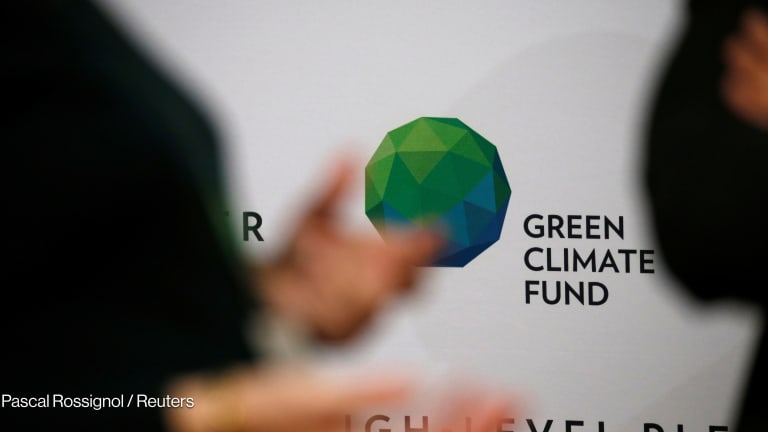
World Bank President David Malpass is “exploring all the options available” to increase the anti-poverty lender’s financial capabilities to counter a backsliding in key global development measures, help nations with large debt loads, and meet the growing demand for more climate finance.
Malpass made the comments in a note to staff Monday that was seen by Devex. It was sent following his visit to Sharm el-Sheikh, Egypt, for the 27th United Nations Climate Change Conference, or COP 27.
Malpass faces a tight deadline to deliver a road map for reform by the end of the year, as demanded by the United States, the bank’s largest shareholder. Critics accuse Malpass of slow-walking changes at the bank, and he is in the hot seat over his recent climate remarks, adding pressure to a movement to overhaul how the bank works.
Malpass told staff he is taking a three-pronged approach to potentially reform the lender in what is being dubbed an “evolution roadmap.” The first is to expand into more so-called “global public goods” such as climate; the second, to get more capital to middle-income countries; and the third, to seek options for increasing the bank’s deployment of financial firepower — basically finding sustainable ways to lend more.
The broad strokes of the planning are in line with demands from U.S. Treasury Secretary Janet Yellen, who last month called on multilateral banks to evolve and think bigger — including by lending more and moving more resources to middle-income countries, which until now have not received concessional terms for loans. Germany is backing the United States’ calls for reform efforts, especially for more climate lending.
In a recent interview with Devex, a senior Treasury official warned that Yellen’s calls for reform are “unequivocally clear” and that the Biden administration remains set on results. Malpass told Devex in an interview that he “embraced” the reform movement and did not see a trade-off between fighting poverty and fighting climate change.
In July, a group of independent experts commissioned by the Group of 20 released a report arguing the multilateral lenders could take on more risk, and lend hundreds of billion more, without hurting their financial stability or business model — though there has been pushback and warnings on limits.
Malpass said in his note to staff that the bank is considering the recommendations in the report to the G-20 as one of its options for reform measures.
“There was a broad recognition of the need to increase financing for global public goods, especially climate action,” Malpass wrote to staff of both the bank’s annual meetings in October, as well as the ongoing U.N. climate summit. “These calls are welcome,” he added.
Malpass also pledged to look into ways to use “blended and grant financing more effectively” to reach middle-income nations struggling in the face of multiple crises.
In his note to staff Monday, Malpass said he has formed a leadership team — comprising Axel Van Trotsenburg, the bank’s managing director of operations, and Anshula Kant, the bank’s managing director and chief financial officer — to address the demands.
Malpass also said that reforms the bank has made to date, including increasing the role of risk guarantees and private sector finance, “are not enough,” and that the lender will need to “evolve as an institution to address the changing needs facing development.”
Development experts and private sector investors have expressed concerns that the multilateral lenders are failing to crowd in enough private finance for development, which is seen as a major source of capital, especially with tightening public budgets. The so-called billions-to-trillions agenda — which called for leveraging available development resources to attract new capital — could be “dead,” Charles Kenny at the Center for Global Development wrote earlier this year.
In his remarks to staff, Malpass repeatedly pointed to the need for shareholders to step up, and noted that the member states’ contribution to IDA — the bank’s fund for low-income nations with lending at some of the most concessional terms — have been “flat” since 2016.
At a panel discussion Monday on MDB reforms, Scott Morris, a senior fellow at the Center for Global Development, said IDA is the “future” of the World Bank, given its concessional lending and ability to leverage funds. “You have a full range of potential financing,” he said, calling it the “most flexible arm” of the bank.
IDA, unlike the core operations of the bank, is replenished by donors every few years. It has even been infused with capital from the other parts of the lender, meaning it is not self-sustaining.
The IDA funding shortfalls come amid growing concerns for development aid budgets more generally, including from key donor countries like the United Kingdom. Recent calls for a capital increase to the anti-poverty banks have largely been rebuffed.








